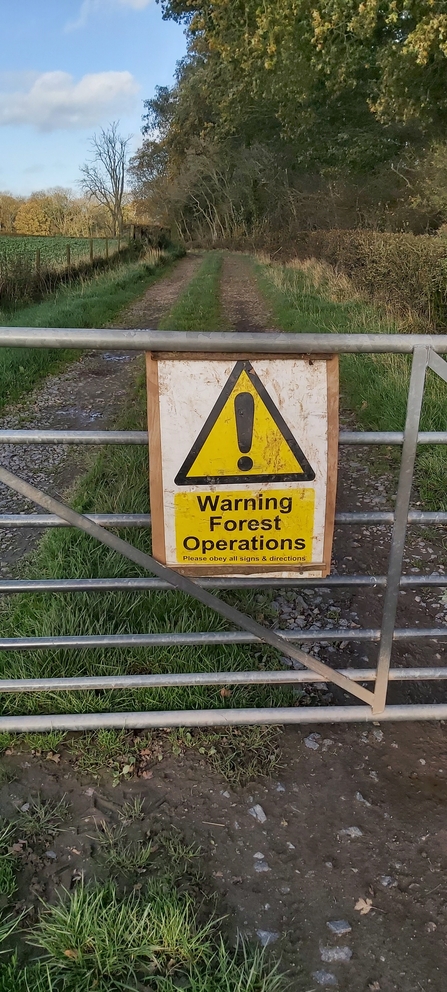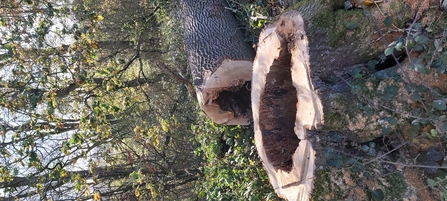From a habitat perspective, thinning allows more light onto the woodland floor and understorey. This triggers the natural regeneration of tree seeds in the soil, whilst encouraging young stems in the understorey to mature. Over the coming years these will replace any trees removed by thinning and the cycle of woodland management can continue for generations to come.
Woodland Reserve Management this Winter

Restricted access may be in place on some of our woodland reserves.
The work has given us the opportunity to see and address some of the real impacts of ash dieback in our woodlands. It is already apparent that dieback is irreparably damaging and will likely kill many mature ash trees on nature reserves. The decay of the heart wood of the felled ash in the photo below is clear evidence that trees of all age are being impacted. Large trees in this condition are known to fail catastrophically without warning, which puts staff and visitors to the reserves at real risk of harm now and in the future unless we act to address this.

The effects of ash dieback seen here in the decay of the heart wood of a felled ash tree.
The thinning complements the coppicing and ride cutting, that our volunteers carry out every year under the same stewardship schemes. However because of the scale and technical difficulty involved, thinning can only be carried out by forestry contractors. As such there will be some disruption on the sites and visitor access will be affected while their work is ongoing.
We suggest that anyone wishing visit our woodland reserves in the north (Brilley Green Dingle, Holywell Dingle, Court Wood, Wern Wood, Clay Vallet Wood) or east (Romers Wood, Motlins Hole) first contact reserve officer Lewis Goldwater on 07377 526316 to check if the contractors are working on these reserves. Visitors must adhere to any warning signs when on site.

